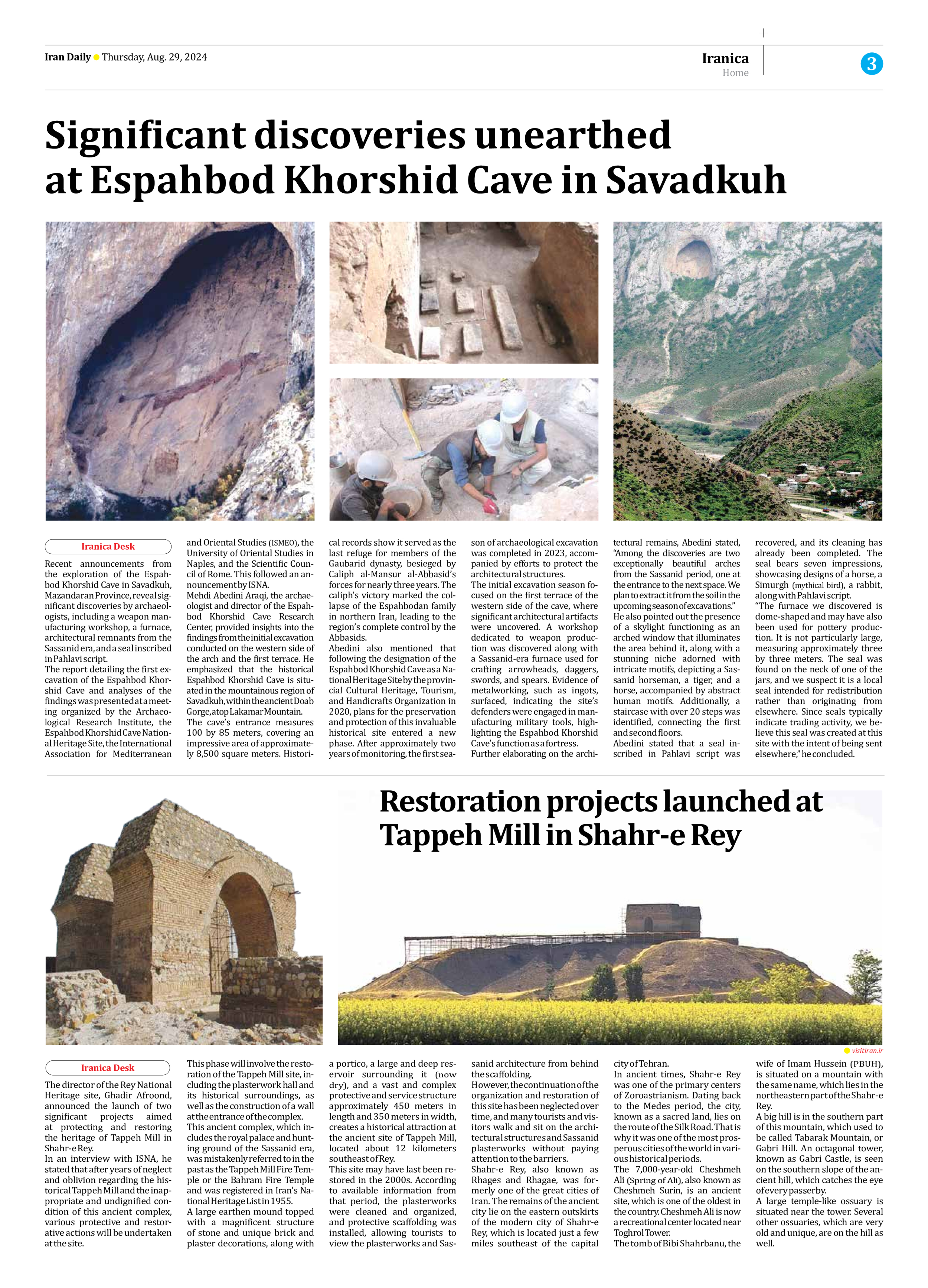
Restoration projects launched at Tappeh Mill in Shahr-e Rey
The director of the Rey National Heritage site, Ghadir Afroond, announced the launch of two significant projects aimed at protecting and restoring the heritage of Tappeh Mill in Shahr-e Rey.
In an interview with ISNA, he stated that after years of neglect and oblivion regarding the historical Tappeh Mill and the inappropriate and undignified condition of this ancient complex, various protective and restorative actions will be undertaken at the site.
This phase will involve the restoration of the Tappeh Mill site, including the plasterwork hall and its historical surroundings, as well as the construction of a wall at the entrance of the complex.
This ancient complex, which includes the royal palace and hunting ground of the Sassanid era, was mistakenly referred to in the past as the Tappeh Mill Fire Temple or the Bahram Fire Temple and was registered in Iran’s National Heritage List in 1955.
A large earthen mound topped with a magnificent structure of stone and unique brick and plaster decorations, along with a portico, a large and deep reservoir surrounding it (now dry), and a vast and complex protective and service structure approximately 450 meters in length and 350 meters in width, creates a historical attraction at the ancient site of Tappeh Mill, located about 12 kilometers southeast of Rey.
This site may have last been restored in the 2000s. According to available information from that period, the plasterworks were cleaned and organized, and protective scaffolding was installed, allowing tourists to view the plasterworks and Sassanid architecture from behind the scaffolding.
However, the continuation of the organization and restoration of this site has been neglected over time, and many tourists and visitors walk and sit on the architectural structures and Sassanid plasterworks without paying attention to the barriers.
Shahr-e Rey, also known as Rhages and Rhagae, was formerly one of the great cities of Iran. The remains of the ancient city lie on the eastern outskirts of the modern city of Shahr-e Rey, which is located just a few miles southeast of the capital city of Tehran.
In ancient times, Shahr-e Rey was one of the primary centers of Zoroastrianism. Dating back to the Medes period, the city, known as a sacred land, lies on the route of the Silk Road. That is why it was one of the most prosperous cities of the world in various historical periods.
The 7,000-year-old Cheshmeh Ali (Spring of Ali), also known as Cheshmeh Surin, is an ancient site, which is one of the oldest in the country. Cheshmeh Ali is now a recreational center located near Toghrol Tower.
The tomb of Bibi Shahrbanu, the wife of Imam Hussein (PBUH), is situated on a mountain with the same name, which lies in the northeastern part of the Shahr-e Rey.
A big hill is in the southern part of this mountain, which used to be called Tabarak Mountain, or Gabri Hill. An octagonal tower, known as Gabri Castle, is seen on the southern slope of the ancient hill, which catches the eye of every passerby.
A large temple-like ossuary is situated near the tower. Several other ossuaries, which are very old and unique, are on the hill as well.







